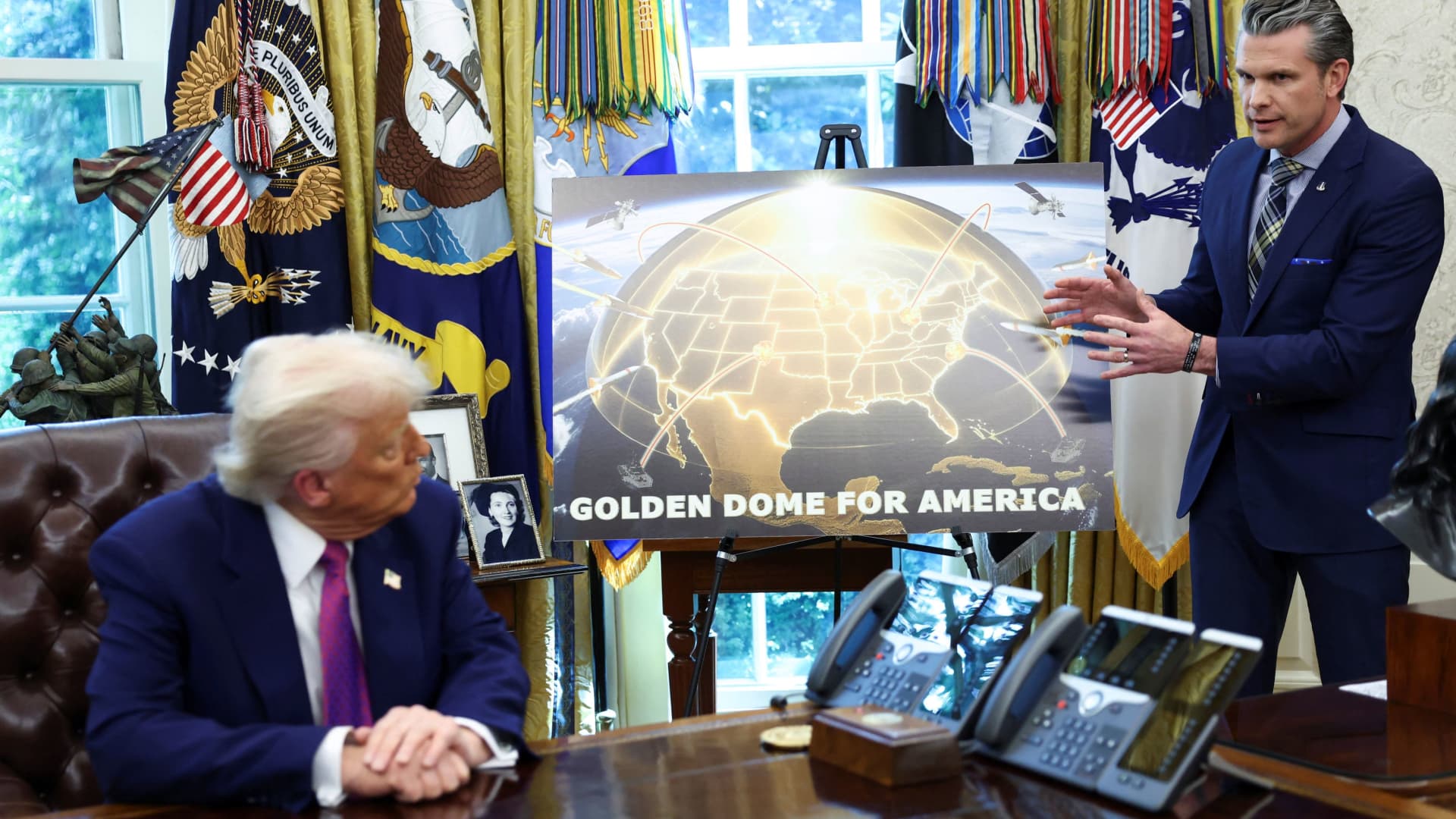Major defense stocks can still benefit even if President Donald Trump ‘s “Golden Dome” project fails, according to Bernstein. The prospect of completing the missile defense system before the end of Trump’s term in 2029, which the president has cited as his goal for the project, is highly unlikely, analyst Douglas Harned wrote in a note to clients last week. However, that doesn’t mean the effort won’t drive business for the defense industry, he said. “Even if the system fails to deliver, we expect elements to survive and for companies to profit off efforts, even when they do not succeed — and spending could go much higher,” Harned said. Creating such an expansive defense system will likely require contributions and cooperation from the entire industry, Harned explained. Also, Trump has mentioned extending contracts to some nontraditional companies, Harned said, adding that this decision may not make the project any easier. “While we see little chance that the system will be complete within three years, we expect money will be spent and benefit most major defense contractors,” he said. Harned expects L3Harris Technologies , RTX, Northrop Grumman , Lockheed Martin , BAE Systems and Boeing will be among the beneficiaries. Bernstein rates Boeing and L3Harris Technologies as overweight, and has a market perform rating on the rest. Harned’s $273 per share price target on L3Harris implies nearly 10% upside from Wednesday’s $248.83 close, while his $249 price target for Boeing suggests roughly 25% upside. Boeing shares closed at $197.68 on Wednesday, giving it a 13% year-to-date gain. L3Harris shares are up 19% during the same period. Markets were closed Thursday. Trump estimated last month that the project will cost roughly $175 billion, but Harned anticipates it will ultimately cost more than that. About $25 billion has already been included in the 2026 U.S. defense budget, according to Trump. The project’s ambitions are a big challenge, according to the analyst. “In order to truly defend the entire US,” he said, “it will be necessary to go back to a complex multi-layered system, that can address a wide range of attacks.” “The cost of true coverage of the US will be extreme, with the problem that the system would always need to evolve as enemies evolve their capabilities,” Harned said. “The situation is analogous to cybersecurity. It is much less expensive to attack than it is to defend.”





